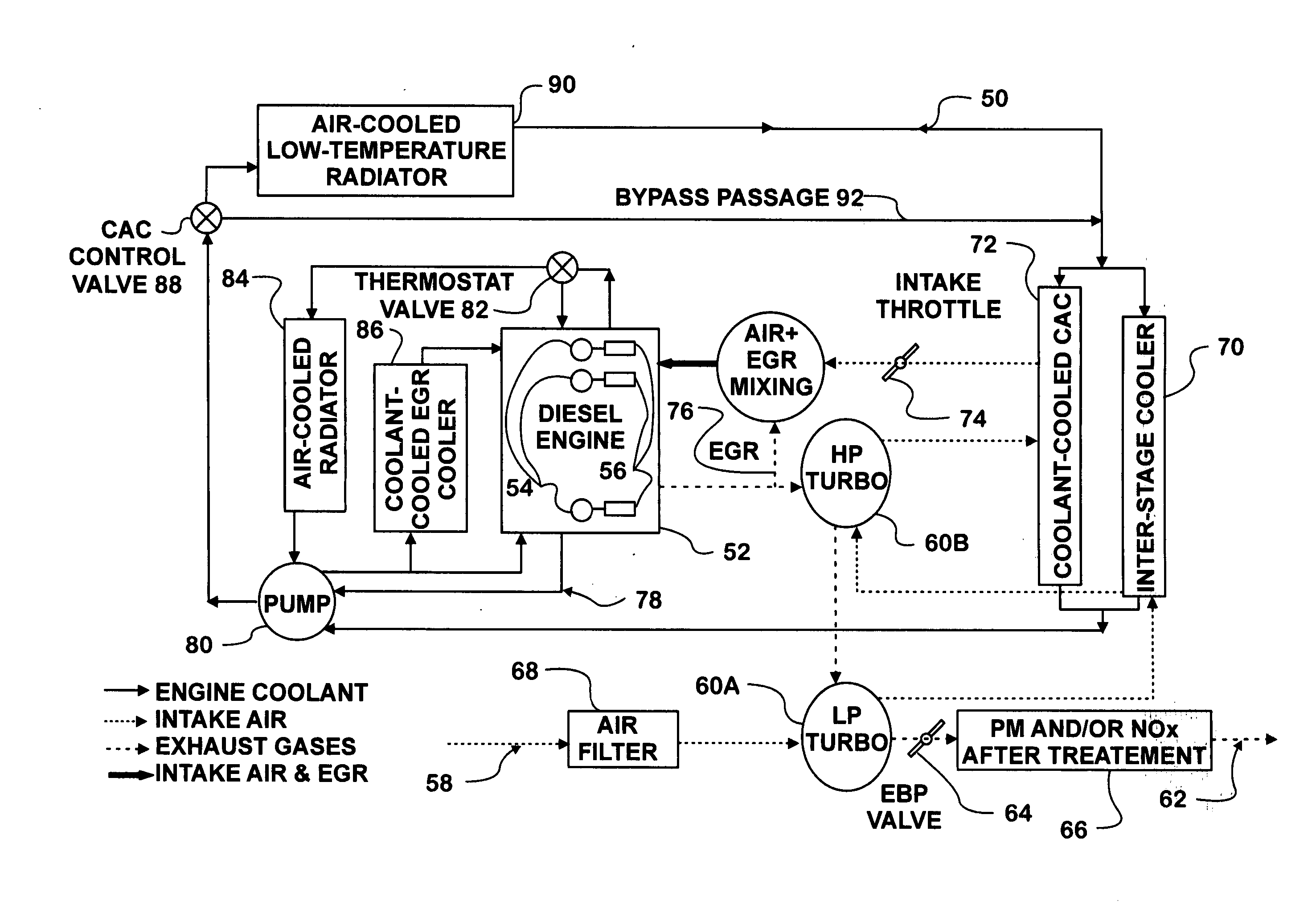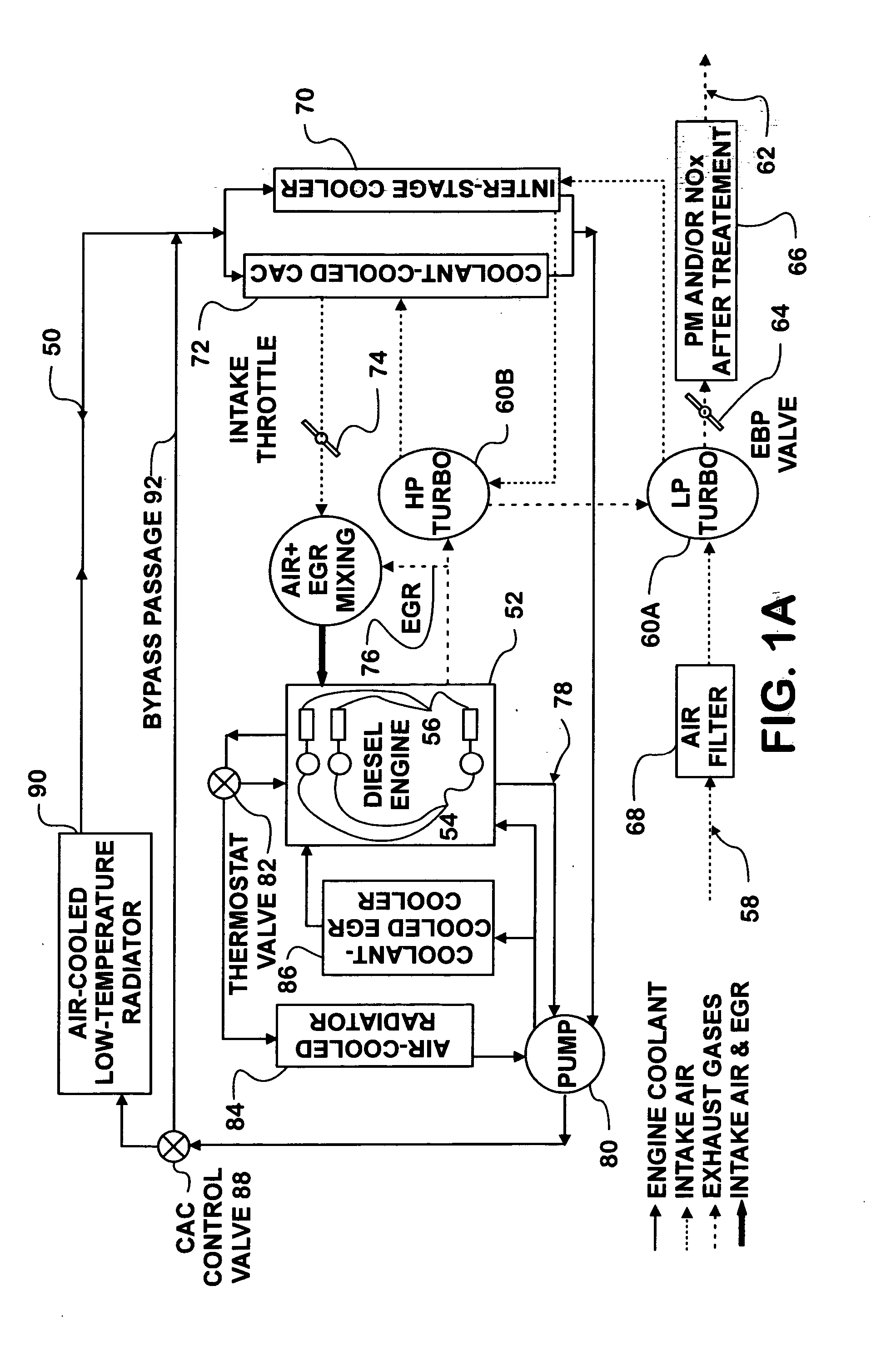Flexible engine cooling and exhaust gas temperature controls for diesel after-treatment regeneration and engine performance improvement
a technology of flexible engine cooling and exhaust gas temperature control, which is applied in the direction of electric control, machines/engines, mechanical equipment, etc., can solve the problems of low load and/or cold ambient temperature of diesel engines running at low load, and achieve the effect of avoiding installation and warranty costs, improving engine performance, and cost-effectiveness
- Summary
- Abstract
- Description
- Claims
- Application Information
AI Technical Summary
Benefits of technology
Problems solved by technology
Method used
Image
Examples
Embodiment Construction
[0043] A flexibly controlled liquid-cooled charge air cooler (CAC) in a turbocharged diesel engine can be flexibly controlled to aid in attaining exhaust gas temperatures suitable for regenerating and / or achieving high conversion efficiency of after-treatment devices, depending on the particular after-treatment device, over an entire engine speed-load domain at different ambient temperatures. An overall strategy for attaining those exhaust gas temperatures preferably comprises flexible control of a CAC in conjunction with control of exhaust back-pressure (EBP) by controlling the extent to which an EBP valve is allowed to restrict exhaust gas flow. The overall strategy can accomplish DPF regeneration at the same time that engine air / fuel (A / F) ratio is reduced for NOx emission compliance. An intake throttle, as an optional device, can also be used for NOx emission control.
[0044]FIGS. 1A-4 show seven embodiments of flexible control systems, differing in CAC coolant feed location, num...
PUM
 Login to View More
Login to View More Abstract
Description
Claims
Application Information
 Login to View More
Login to View More - R&D
- Intellectual Property
- Life Sciences
- Materials
- Tech Scout
- Unparalleled Data Quality
- Higher Quality Content
- 60% Fewer Hallucinations
Browse by: Latest US Patents, China's latest patents, Technical Efficacy Thesaurus, Application Domain, Technology Topic, Popular Technical Reports.
© 2025 PatSnap. All rights reserved.Legal|Privacy policy|Modern Slavery Act Transparency Statement|Sitemap|About US| Contact US: help@patsnap.com



